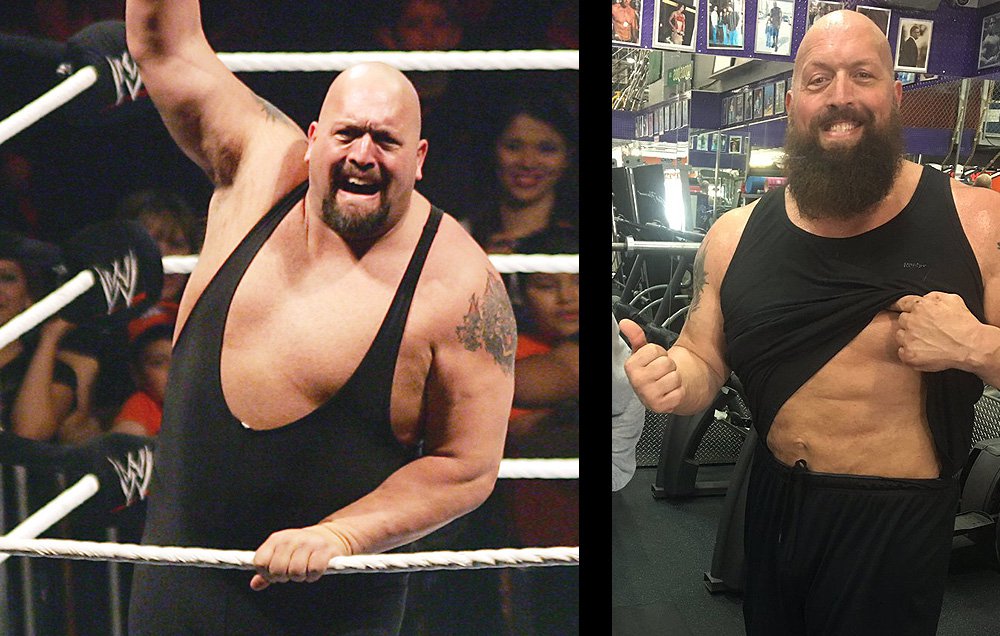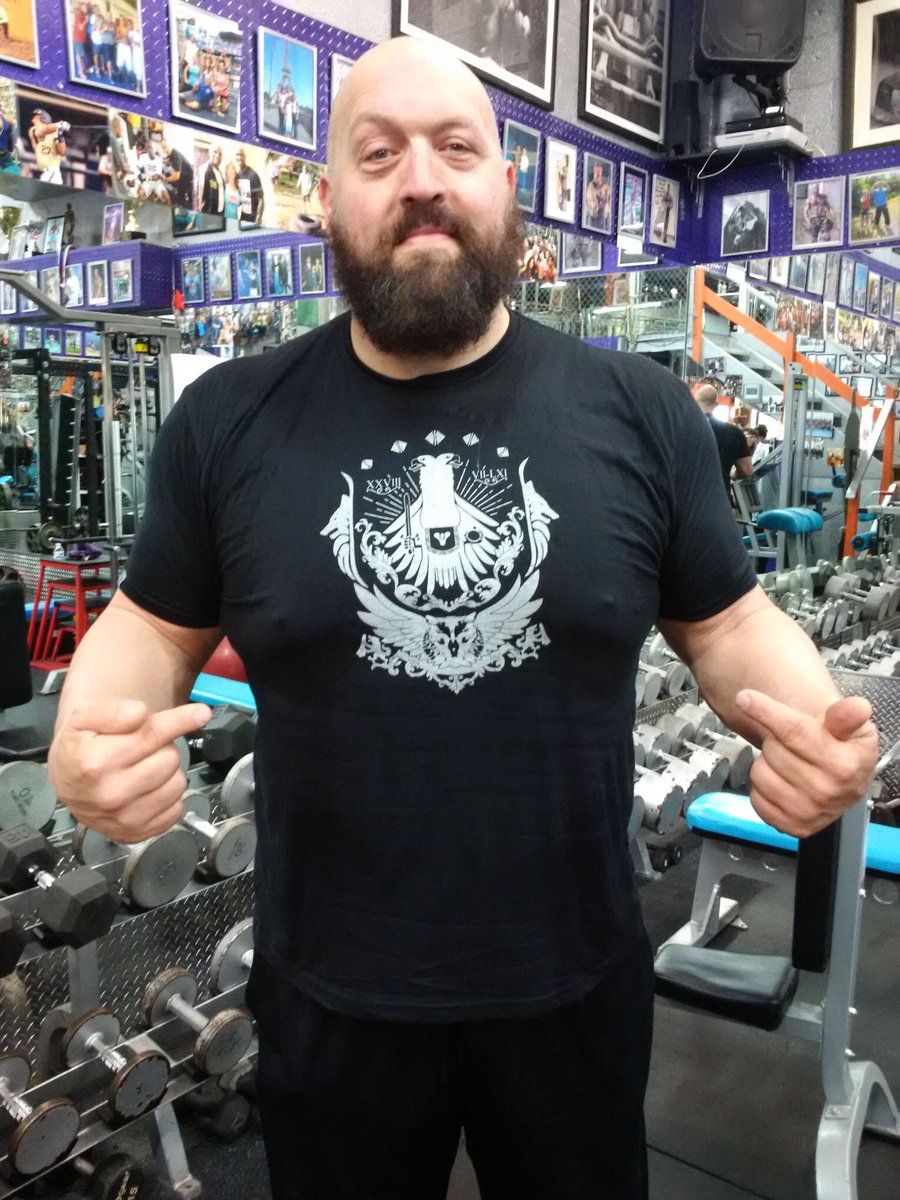The titled “World’s Largest Athlete” isn’t quite as large these days, after making the decision to slim down and get healthier!
Paul talks to WWE.com and talks about how he started getting committed to fitness and living a healthier lifestyle.
“It was definitely a conscious decision. You don’t make the transformation I’ve made without a serious commitment to changing 40 years of improper diet and improper training. I wanted to make a change, and I was given the time and opportunity to make a change, so I took advantage of it.
I’ve worked a hard schedule for 22 years. Five days a week, 200-plus days a year on the road. With that time off, it was a chance for me to re-evaluate what I want to do with my future, what I want to do with myself, and really take this challenge on and see if I could make a change.”

Did you enlist the help of a trainer or was this something you put together on your own?
I definitely did not do this on my own. I owe almost all of this to my trainer, Dodd Romero in Miami, Fla. Dodd’s worked with a lot of professional athletes and a lot of celebrities. He understands the rigmarole that celebrities go through. We had a lot of unique opportunities between swimming, biking and weight training, and he put a lot of challenges in front of me that, at the time, I thought he was out of his damn mind, to tell you the truth. But there wasn’t one challenge he put in front of me that I wasn’t able to accomplish with some dedication and some discipline.
What is a typical week of training like for you? You’re obviously working incredibly hard.
For me, it depends on how many days of the week I work. Right now my schedule’s pretty light, but if I’m home three days, I train every day. If I’m home 10 days, I train every day. Right now, mostly, everything I count on is high-rep. Everything from 50 reps, 35 reps, 21 reps. I’m not trying to build muscle right now, I’m trying to keep my metabolism up, keep my tendons strong, keep my joints good and cut a lot of fat. We’ll get to the muscle-building end of it once I get my body fat down to where I want it to be.

Right now I go through a lot of carb cycling. At some point, we’ll flip the switch and start adding some more good carbs in and start changing our reps to maybe an eight-six-four-two-one type of rep deal. Those who weight train know what I’m talking about; lower reps with heavier weight will be more for building muscle. Right now we’re just trying to burn it up and keep it high-energy so the fat doesn’t have a chance to stick and grow.
What were some of the things that surprised you about making this kind of lifestyle change?
This is a big deal. It’s not gonna happen quickly. For me, it took six to seven months of slowly eliminating things, doing research, finding out what I needed to eat, what nutritional products I needed, like pre-workouts and amino acids.
It was a process for me because everybody’s different. It’s funny, I used to ask guys who were in shape all the time, like Triple H, “What do you do?” It was hard to get information out of them, and I understand why now.
When you take the time and do the research it’s more about what suits you, not what suits everybody. That’s the thing I think people who want to make a serious commitment to changing their life should understand. You have to find out what works for you.

At what point did you take a look in the mirror and realize you were really starting to see results?
You know, it’s hard for me. I’ve always been a really hard critic of everything I do. Anyone who knows me knows I’ll always find something to [complain] about. So I’m not the “Power of Positivity,” trust me. I can look at every one of my faults, see they’re there, and go out and try to improve on it.
As far as looking in the mirror and seeing results, it’s little things. When you’re losing body fat, and I’ve lost 70 pounds, you don’t lose it all in one area. You lose it in weird places that you didn’t expect, upper shoulders, abdominals, thighs, your [butt].
While you’re making progress, none of it looks really good. [Laughs] There are some angles that look good, and you think, “Oh, there’s some potential there.” I think it’s like a sculptor, taking a raw block of stone and chiseling out the physique you want to have.

What would you say to people who have a similar mentality and might find themselves getting discouraged that results are coming slowly?
You just have to stay diligent and stay on the path. I think that’s why a lot of people give up. I think that’s why I gave up in the past, because I didn’t understand that this is not an easy process. This is not a diet. The first three letters in the word diet are d-i-e, and that’s why people fail.
This is a lifestyle change, and you have to make a lifestyle commitment, you know? For me, the days of slammin’ ice cream and enjoying pizza and meatball subs are gone. I just have to choose, do I want to be healthier, live longer and look better, or do I want to enjoy really good food all the time?
What was the best reaction you got from a friend or a fellow Superstar when they saw the results you had been producing?
The biggest reaction so far is from John Cena. John’s always been a very committed athlete. John sets the bar pretty high for every Superstar, and I’m not just kissing his butt because he’s John Cena. Professionally, John Cena has my respect more than anybody I’ve ever been around in the ring and out of the ring. He’s a hell of an individual, and we were joking one day.
We were talking about getting in shape and I said, “Ah, what the hell is a giant gonna do with abs?” and John looked at me with a straight face and said, “Yeah. A giant with abs. That wouldn’t be marketable at all.” And he walked off. It was kind of a shot, but [later] John reached out and congratulated me on the work I’ve done. That meant a lot. To have that respect from him was a big boost.
How much of your training do you find to be mental, versus physical?
For me, it’s mental. Completely mental. It’s one of those things where you have to figure out a process that works in your mind. If you get tired, you’re not gonna want to go to the gym and you’re gonna have to make yourself go. Even if it’s 200 sit-ups. Or if you only do a couple sets of arms. Make yourself go. You’ll feel better. The rest is diet. I’ve lost 70 pounds mainly through diet. I’ve done very little cardio because I’m dealing with hip injuries and knee injuries and rehabbing that. If I had to equate it, I’d say 90 percent of losing weight and losing body fat is all what you put in your face.
You say on Twitter that every day is a work in progress.
It is.
So what are you progressing toward as far as gym goals go?
This is all new territory. I was always a big dude, obviously, and I was always a strong dude. So there’s muscle there. Will I end up ever looking like John Cena or The Rock or Triple H? No. But I can take the assets that I have and try to accentuate them. The main thing is we’re going to continue on this road and try to be inspiring to others, hopefully, that want to make a change or don’t believe they can make the change.
There is nothing more powerful, in the world, than the human spirit and the human will. It’s taken us to the moon, for God’s sake. So there is nothing that anyone can stop you from doing if you really want. I hope this interview helps some people. That’s all you can do, right? You try to take your experiences and the trials and tribulations you’ve been through and hopefully make somebody else’s journey a little bit better.

